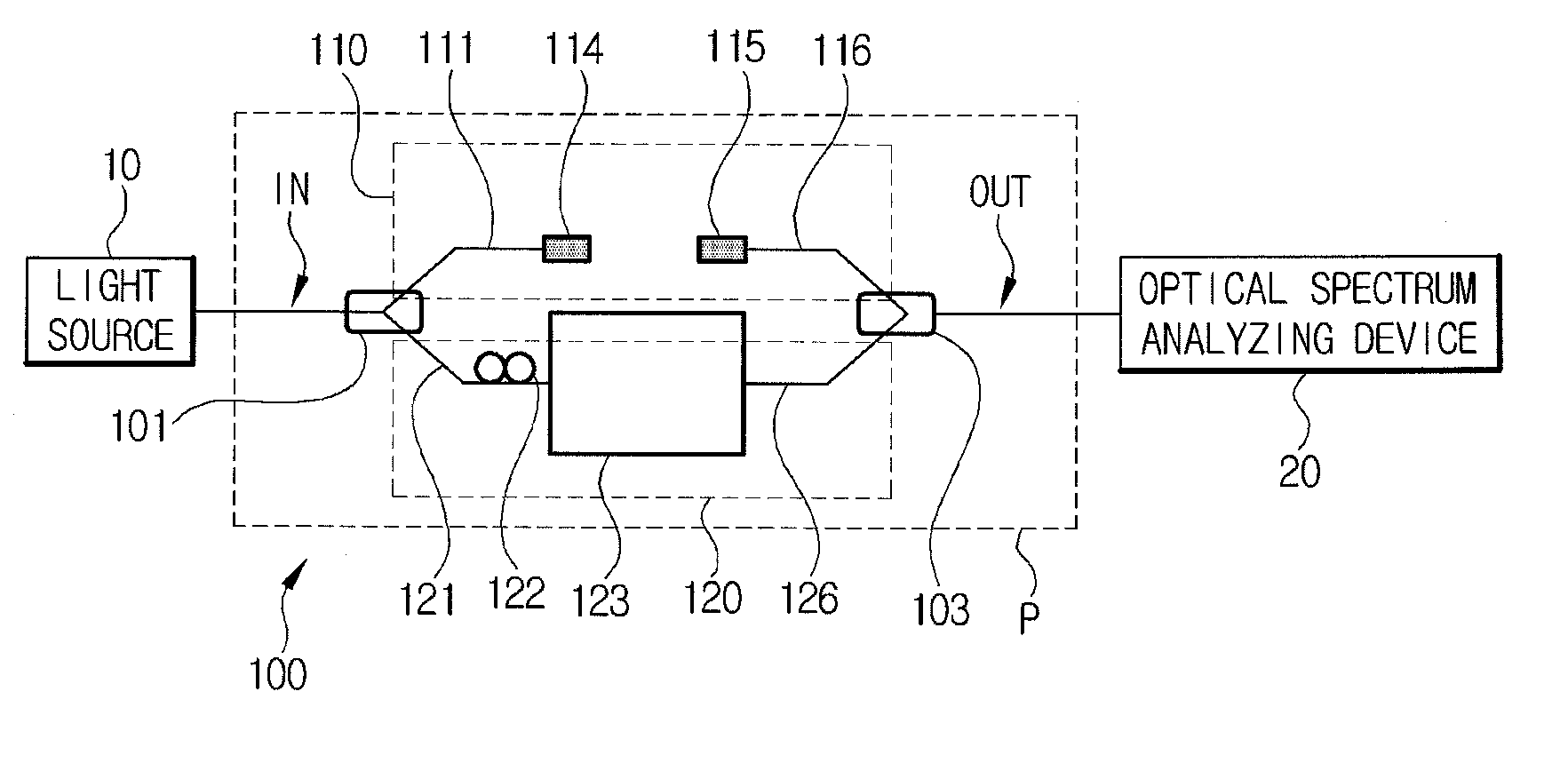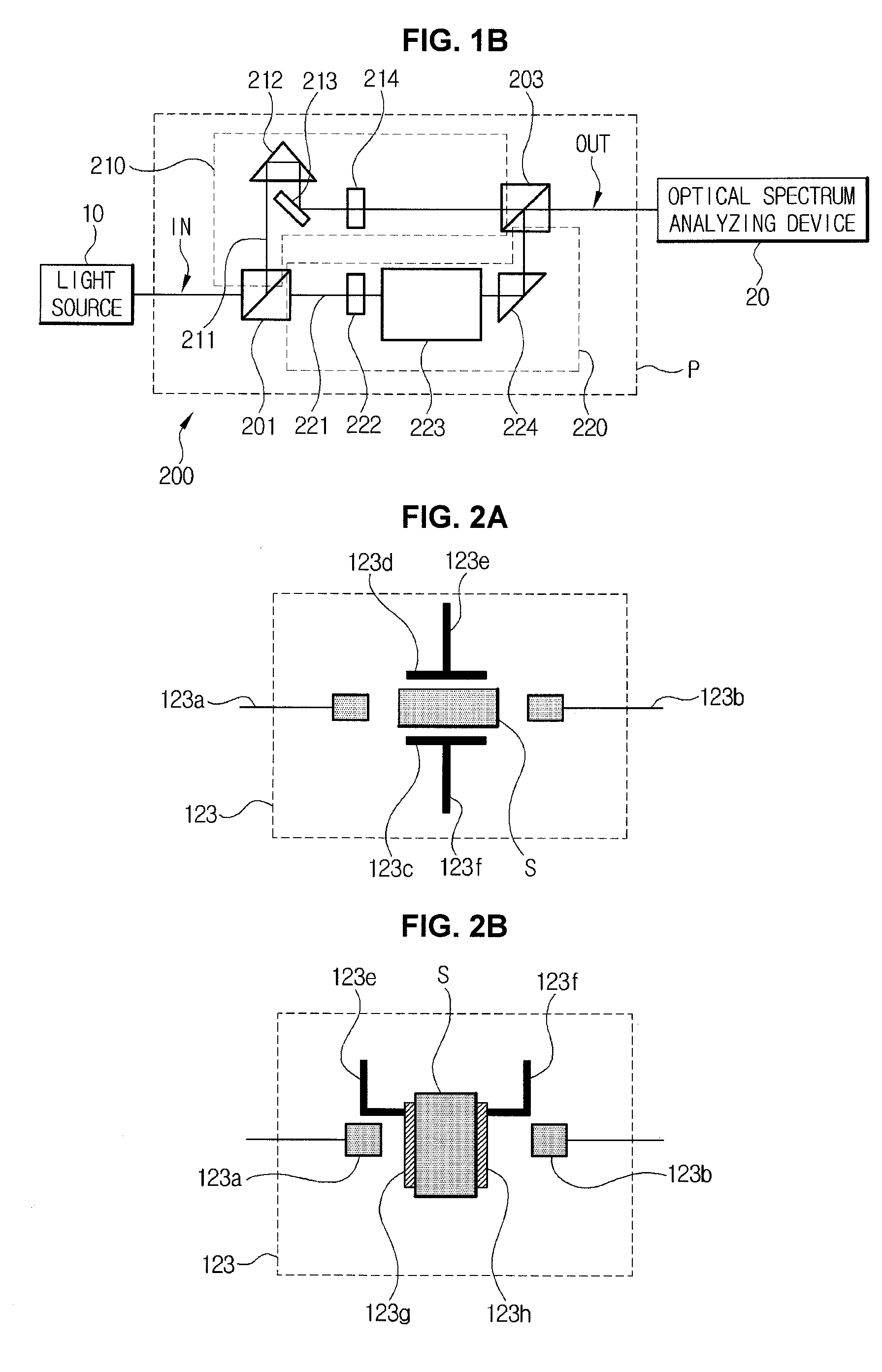Systems for measuring electro-optic and thermo-optic coefficients by using interference fringe measurement, and methods of measuring electro-optic and thermo-optic coefficients by using the systems
a technology of electrooptic coefficients and interference fringes, applied in the field of measurement, can solve the problems of limited measurement of electrooptic coefficients only at a single wavelength, measurement accuracy limited at the maximum accuracy of eo coefficients of reference materials, and measurement accuracy limited at the maximum accuracy of eo coefficients, etc., to achieve fast and accurate measurement systems
- Summary
- Abstract
- Description
- Claims
- Application Information
AI Technical Summary
Benefits of technology
Problems solved by technology
Method used
Image
Examples
Embodiment Construction
[0047]Hereinafter, the present invention will be described more fully with reference to the accompanying drawings, in which exemplary embodiments of the invention are shown. Meanings of terms or vocabularies used herein should not be limited to common or dictionary definitions, and are understood according to a technical aspect of the present invention based on the principle that an inventor can suitably define a concept of a term to describe the invention in the best way possible.
[0048]The invention may, however, be embodied in many different forms and should not be construed as being limited to the embodiments set forth herein; rather, these embodiments are provided so that this disclosure will be thorough and complete, and will fully convey the concept of the invention to those skilled in the art.
[0049]Systems for measuring electro-optic and thermo-optic coefficients by using interference fringe measurement, and methods of measuring electro-optic and thermo-optic coefficients by ...
PUM
 Login to View More
Login to View More Abstract
Description
Claims
Application Information
 Login to View More
Login to View More - R&D
- Intellectual Property
- Life Sciences
- Materials
- Tech Scout
- Unparalleled Data Quality
- Higher Quality Content
- 60% Fewer Hallucinations
Browse by: Latest US Patents, China's latest patents, Technical Efficacy Thesaurus, Application Domain, Technology Topic, Popular Technical Reports.
© 2025 PatSnap. All rights reserved.Legal|Privacy policy|Modern Slavery Act Transparency Statement|Sitemap|About US| Contact US: help@patsnap.com



